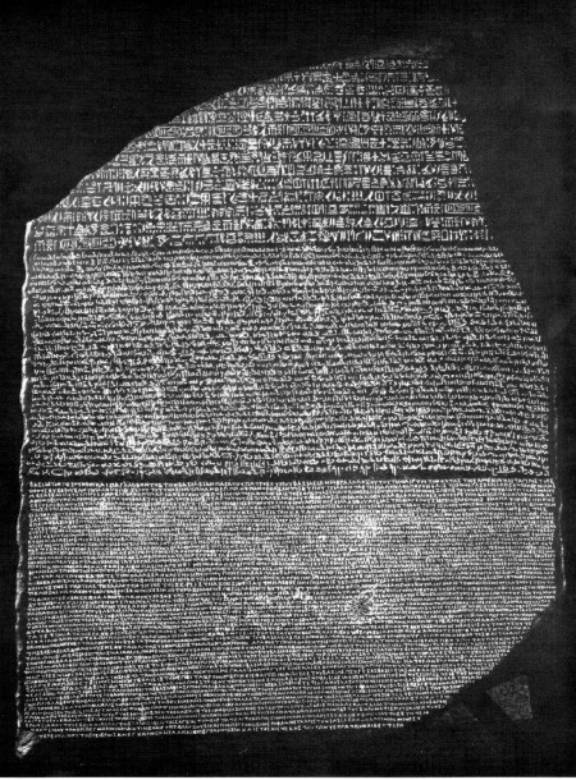
| Back | The Rosetta Stone |
Home |
The Rosetta stone was a valuable key to the decipherment of Egyptian hieroglyphs.
The inscription on the Rosetta Stone is a decree passed by a council of priests, one of a series that affirm the royal cult of the 13-year-old Greek king of Egypt "Ptolemy V" on the first anniversary of his coronation.
In previous years the family of the Ptolemies had lost control of certain parts of the country. It had taken their armies some time to put down opposition in the Delta, and still, parts of southern Upper Egypt, particularly Thebes, were not yet back under the government's control.
The decree is inscribed on the stone three times, in hieroglyphic, demotic and Greek. The importance of this to Egyptology was immense. Soon after the end of the fourth century AD, when hieroglyphs had gone out of use, the knowledge of how to read and write them disappeared. In the early years of the nineteenth century, some 1400 years later, scholars were able to use the Greek inscription on this stone as the key to decipher them. Thomas Young, an English physicist, was the first to show that some of the hieroglyphs on the Rosetta Stone wrote the sounds of a royal name, that of Ptolemy. The French scholar Jean-François Champollion then realized that hieroglyphs recorded the sound of the Egyptian language and laid the foundations of our knowledge of ancient Egyptian language and culture.
Soldiers in Napoleon's army discovered the Rosetta Stone in 1799 while digging the foundations of an addition to a fort near the town of el-Rashid (Rosetta). Upon Napoleon's defeat, the stone became the property of the English under the terms of the Treaty of Alexandria (1801) along with other antiquities that the French had found.
The Rosetta Stone has been exhibited in the British Museum since 1802, with only one break. Towards the end of the First World War, in 1917, when the Museum was concerned about heavy bombing in London, they moved it to safety along with other, portable, 'important' objects. The Rosetta Stone spent the next two years in a station on the Postal Tube Railway fifty feet below the ground at Holborn.
